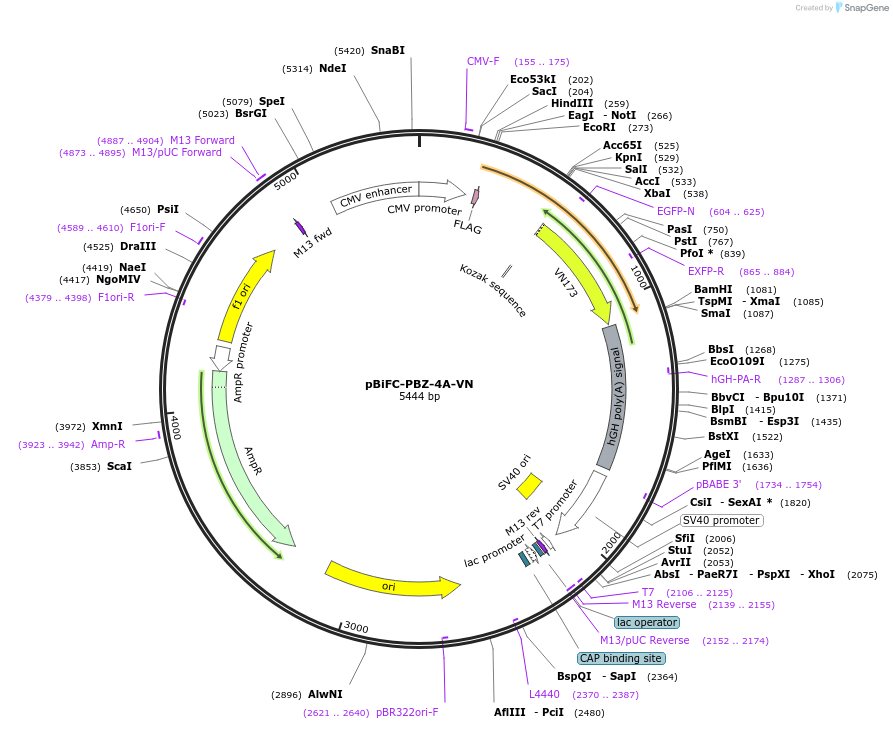pBiFC-PBZ-4A-VN
(Plasmid
#110647)
-
Purposeexpresses a PAR-binding (PBZ) domain fused to venus N-terminus, contains point mutations that abolish PAR binding
-
Depositing Lab
-
Sequence Information
Ordering
| Item | Catalog # | Description | Quantity | Price (USD) | |
|---|---|---|---|---|---|
| Plasmid | 110647 | Standard format: Plasmid sent in bacteria as agar stab | 1 | $85 | |
Backbone
-
Vector backbonepBiFC-VN173
-
Backbone manufacturerChang-Deng Hu, Addgene plasmid #22010
-
Vector typeMammalian Expression
Growth in Bacteria
-
Bacterial Resistance(s)Ampicillin, 100 μg/mL
-
Growth Temperature37°C
-
Growth Strain(s)DH5alpha
-
Copy numberHigh Copy
Gene/Insert
-
Gene/Insert namePBZ domain from APLF, amino acids 371-451
-
Alt nameAprataxin and PNK-like factor
-
SpeciesH. sapiens (human)
-
MutationC379A, C385A, C421A and C427A
-
Entrez GeneAPLF (a.k.a. APFL, C2orf13, PALF, Xip1, ZCCHH1)
- Promoter CMV
-
Tags
/ Fusion Proteins
- DDK (N terminal on insert)
- VN (C terminal on backbone)
Cloning Information
- Cloning method Restriction Enzyme
- 5′ cloning site EcoRI (not destroyed)
- 3′ cloning site KpnI (not destroyed)
- 5′ sequencing primer unknown (Common Sequencing Primers)
Resource Information
-
Supplemental Documents
Terms and Licenses
-
Academic/Nonprofit Terms
-
Industry Terms
- Not Available to Industry
Trademarks:
- Zeocin® is an InvivoGen trademark.
These plasmids were created by your colleagues. Please acknowledge the Principal Investigator, cite the article in which the plasmids were described, and include Addgene in the Materials and Methods of your future publications.
-
For your Materials & Methods section:
pBiFC-PBZ-4A-VN was a gift from Chris Lord (Addgene plasmid # 110647 ; http://n2t.net/addgene:110647 ; RRID:Addgene_110647) -
For your References section:
Coupling bimolecular PARylation biosensors with genetic screens to identify PARylation targets. Krastev DB, Pettitt SJ, Campbell J, Song F, Tanos BE, Stoynov SS, Ashworth A, Lord CJ. Nat Commun. 2018 May 22;9(1):2016. doi: 10.1038/s41467-018-04466-4. 10.1038/s41467-018-04466-4 PubMed 29789535


